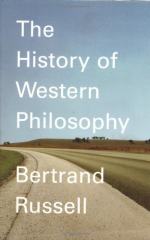|
This section contains 578 words (approx. 2 pages at 400 words per page) |

|
Book 2: Chapter 12, The Thirteenth Century Summary and Analysis
The thirteenth century was the age of the synthesis, where institutions and philosophies dissolved. Its most distinguished men were Innocent III, Saint Francis, Frederick II, and Thomas Aquinas. Achievements involved Gothic cathedrals, romantic literature by Charlemange, Arthur, and the Niebelungen with scholastic philosophy initiated by Aquinas.
At the beginning of the century Pope Innocent III (119801216), engaged in most extreme claims in his papacy and little Christian humility. He thought of himself as king of kings while his views adhered strictly to the text. Taking advantage of various opportunities such as helping Constance, who married the Emperor Henry VI (d. 1197) he secured her son's Frederic rights that recognized papal superiority. King John in England yielded his kingdom to Innocent.
As part of crusades, Constantinopole was captured, while Innocent ordered the great Crusade against the...
(read more from the Book 2: Chapter 12, The Thirteenth Century Summary)
|
This section contains 578 words (approx. 2 pages at 400 words per page) |

|




